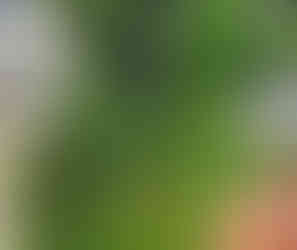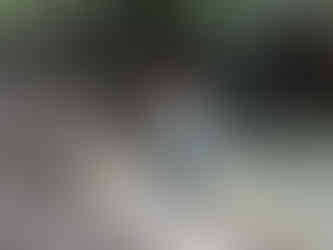Eco-barriers and the rescue of balance between species on the planet
- plataforma9

- Mar 13, 2023
- 5 min read
Updated: Jun 17, 2024
Leia esse artigo em português aqui.
Ocean pollution threatens the survival of all marine animals, and ours too. It’s difficult to understand the magnitude of the impact that litter has on our lives when we don’t see where it’s going, and how the path that leads to the extinction of so many aquatic species affects human life. Indigenous civilizations, that once survived in symbiosis with the fauna and flora of their regions, now don’t see the same diversity of life and mutualism between existences. The world is not the same. The question is how to move forward in this paradigm.
A tool to understand which garbage travels which way towards the ocean makes it possible to identify the source and path of the problem of garbage pollution – the eco-barrier. This understanding helps us to act on the source and symptom of the problem caused by floating waste discarded by the urban population. Eco-barriers are barriers at the mouth of rivers, or outflow points in megacities. A 2011 study by Marcos Freitas points out that the accelerated growth of urban centers, increased consumption, inadequate municipal water management systems and garbage collection contribute to an exorbitant amount of garbage being discarded in rivers. In the context of Rio de Janeiro, only 3 eco-barriers in 2008 collected more than 100 tons of plastic, metal, wood and cardboard (M. Freitas 2011).
Data like these are expected, but the interesting thing about this research was that it identified the source of the problem as not being so much “the increase in the production of household solid waste” but the increase in the municipal Gross Domestic Product. That is, increased consumption by individuals does not cause pollution in rivers as much as increased imports and exports, government spending and business investments. Government institutions and businesses are more environmentally irresponsible than individual consumers, and this has only become more evident since 2011.
Today, there is an eco-barrier at the mouth of the João Mendes river, in the oceanic region of Niterói, maintained by a group of volunteers. It was funded by ecoponte, a company that manages the Rio-Niterói bridge, and is interested in offsetting its carbon footprint. And the barrier is managed by members of the AmaDarcy organization, whose objective is to protect the natural and urban environment through the preservation of ecologically important areas in the Serra da Tiririca region.
According to a report developed by the group in February 2023,
“The João Mendes (JM) is a polluted river, despite its crystalline source within the Serra da Tiririca State Park (PESET). Although a significant part of the sewage from the JM hydrographic basin is collected and sent to the Itaipu Sewage Treatment Station (ETE Itaipu), which operates with a nominal flow of 164 liters per second, there is a significant amount of sewage that is not yet directed to the ETE Itaipu and flows directly or indirectly into the João Mendes river and, consequently, into the Itaipu lagoon (Marine Extractive Reserve of Itaipu-RESEX Itaipu), generating its pollution.”
“The amount of solid waste (garbage) that has been thrown into the João Mendes river weekly (about 250 kg) also contributes significantly to its pollution, evidencing precarious sanitary conditions. Since September 2022, the NGO AmaDarcy has been collecting garbage weekly at the eco-barrier implanted in the João Mendes river, located near the mouth of this river in the Itaipu lagoon. The total amount of garbage collected and bagged by AmaDarcy between September 2022 and January 2023 was more than 6 tons (more than one and a half tons per month), thus avoiding its disposal in the Itaipu lagoon and in the sea (RESEX Itaipu). The garbage is then removed and taken by the Cleaning Company of Niterói (CLIN) to an appropriate final destination.”
The relationship between sewage and garbage pollution is evident when we consider uncontrolled urban expansion, without infrastructure and institutions effective enough to deal with this growth. As volunteers, the group's focus on floating litter makes sense when considering the distance this litter travels, and the difficulty of controlling that flow without these barriers – which don't impede the flow of the river, but fix surface debris in place until a team can collect it. This collection takes place weekly, and when possible, waste is sorted by material and weighed, despite sewage pollution in the area posing a threat to volunteers and instigating the need for cautious hygiene. The recorded data includes not only the type and weight of the garbage, but also the brands of discarded products, the height of the river, and the amount of rain on the day before and during the week of collection.
Pluviometric Volume or Index is measured by millimeter of rain per square meter in a certain place and time. Source: (A627, from INMET)
The materials found are plastic, glass, metal, fabric (plástico, vidro, metal, tecido), among others. Microtrash (Microlixo) is registered as a separate category, and means a mixture of small waste such as cigarette butts, microtubes of narcotics, fragmented Styrofoam, other plastics and plant parts that become entangled with this waste. Tetra pak is also registered separately, because they are those packages with a mixed composition of metal, paper and plastic, often used for products such as milk, juice and tomato sauce. There are other materials identified (outros), but not individually categorized, such as occasional toys, electronic waste, light bulbs, tires, mattresses, etc. While unidentified waste (não identificados) is the closed bags found at the barrier that are not opened because they may contain materials that pose a risk to the health of volunteers – such as syringes, razors, diapers, condoms, used toilet paper, etc.
This data helps us identify the source of water pollution, and makes us aware of our own consumption and waste disposal. According to the 2011 research by Marcos Freitas, there is a correlation between the increase in family income and the increase in public waste, while domestic waste remains in the same range. This could mean that the increase in Gross Domestic Product (and perhaps climatic contexts) leads to "greater consumption in public areas". What does this mean for us and our consumption practices in public areas? What do we know about the waste disposal practices of the businesses we visit and the waste collection on behalf of our municipalities?
The problem of waste disposal and ocean pollution has many facets. There is an issue of institutional administration, which reflects on the political decisions of a municipality—to overinvest in one thing while neglecting another. Urban expansion becomes harmful because of the failure of these political administrations, and financial interests which are far greater than each family's home. This is why the municipal Gross Domestic Product generates more environmental problems than the accumulation of individual consumption.
On the other hand, community awareness and access to information about the environmental situation in our neighborhoods can not only improve personal consumption practices and waste disposal, but can also encourage the population to demand more responsibility from public administrations and more effective use of public funds. In the meantime, preventing literal tons of garbage from ending up in the ocean helps kick-start a rescue of biodiversity and the balance between species on this planet.
_____
By Mirna Wabi-Sabi












Comments